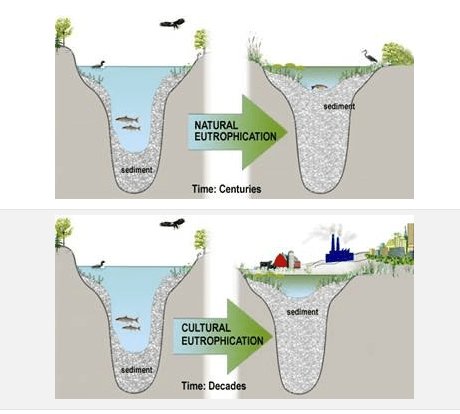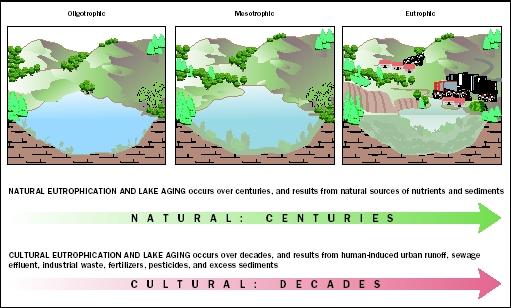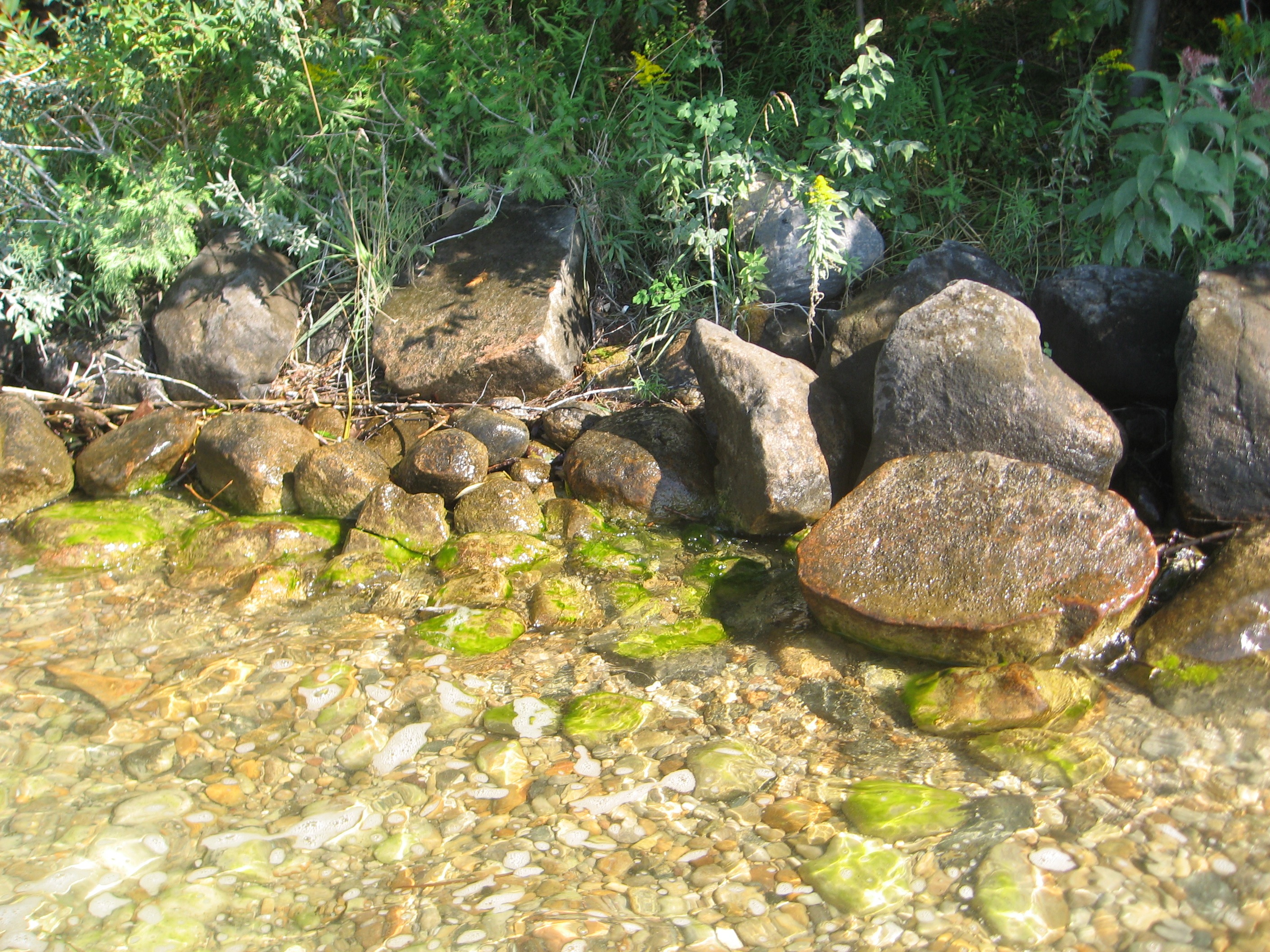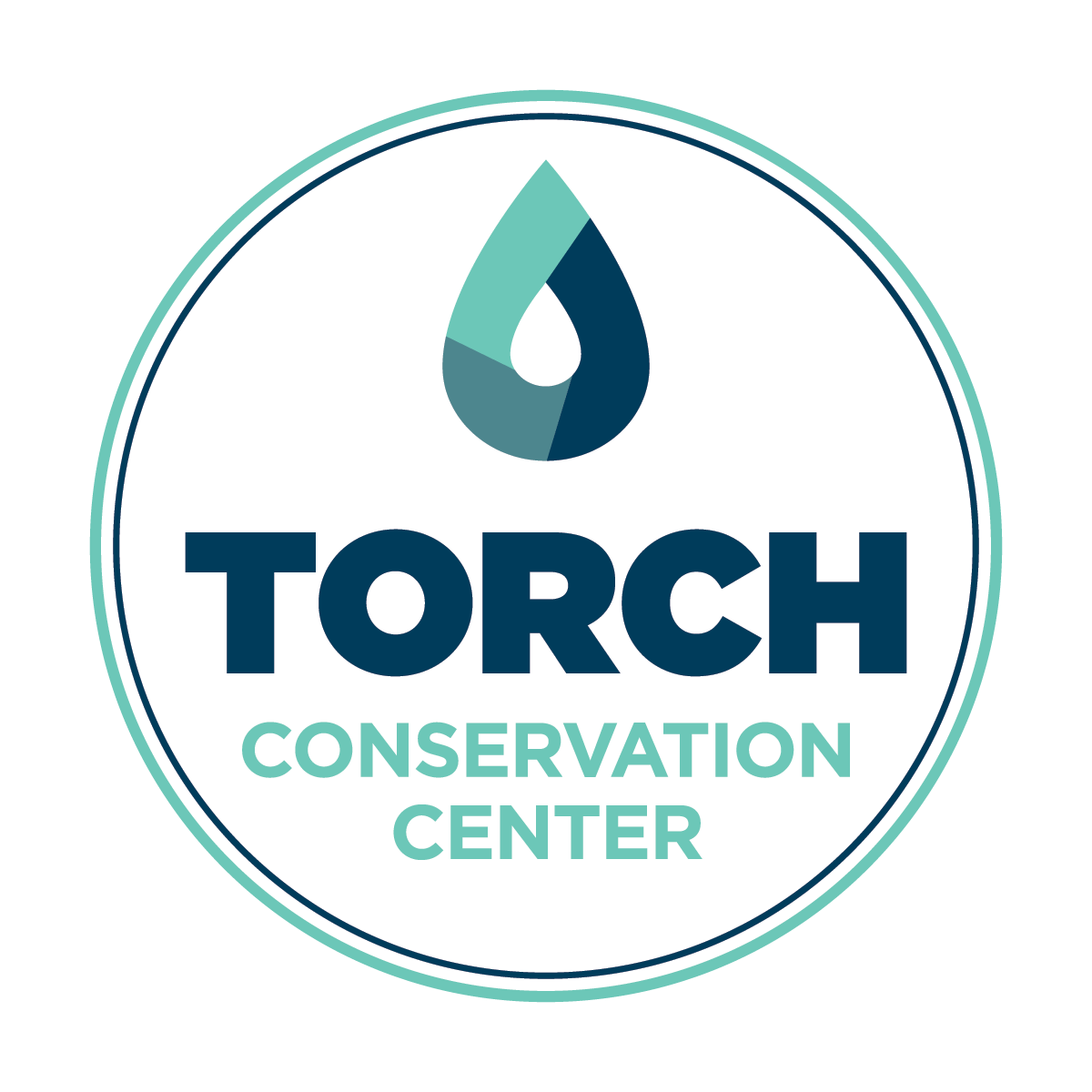
Nutrients
Nutrients in the lake fertilize algae. Too much algae can turn the water green.
Key Facts
- Nutrients are needed for plants to grow on land and in the water.
- Two main nutrients are phosphorus and nitrogen.
- In freshwater lakes, phosphorus and nitrogen promote the growth of algae, microscopic floating plants (phytoplankton), and rooted aquatic plants.
- Nutrients along with sediments cause lakes to age.
- The natural aging process (eutrophication) can take centuries.
- BUT, human activities have accelerated changes in Torch Lake over just a few decades.
Did you know?
Aging Lakes
Nutrients, plant growth and water clarity determine the age of a lake. There are 3 age classes for lakes:
- Young lakes (oligotrophic) have low level of nutrients and a low level of plant growth with high water clarity. Torch Lake is an oligotrophic lake.
- Middle-age lakes (mesotrophic) have an intermediate level of nutrients and an intermediate level of plant growth. The water is often clear with submerged aquatic plants. Lake Bellaire is an example of a mesotrophic lake.
- Old lakes (eutrophic) have high levels of nutrients and high levels of plant growth. In a eutrophic lake, if algae dominate, the water clarity will be poor. But if aquatic plants dominate, the water will be clear. Clam Lake is a eutrophic lake.
As lakes age, they gradually become filled with sediments and become a wet meadow or dry lake.
This process can take centuries.
- Human activities such as constructing buildings, paving roads and driveways with impermeable surfaces, filling wetlands and removing natural buffers along streams and the lake have increased the amount of nutrients in stormwater.
- Additional nutrient loading from lawn fertilizers, leaking septic systems and animal waste have speeded up this aging process, too.

Image: Lake Scientist
Human Impact on Eutrophication

Algal Blooms
Nutrients act as fertilizers. Just as fertilizers turn lawns green, the nutrients in the fertilizers cause algae to grow in lakes. Then the lakes turn green. Algae can grow in small patches or massive algal blooms that spread along the shore and out into the lake. Algal blooms generally occur where there are high levels of nutrients coupled with warm, sunny and calm conditions. Some algal blooms are toxic killing fish and harming humans and their dogs. These algal blooms are called Harmful Algal Blooms. Harmful Algal Blooms ( abbreviated HAB) are starting to occur more in northern Michigan including the Chain of Lakes.
Algal bloom – Sleeping Bear Dunes National Lakeshore (August 6, 2012)

Algae (Cladaphora) on rocks in Torch Lake

Show
You Care
We know you want to enjoy the lake for many years (and generations) to come. So, we’ve put together a list of simple steps you can take to reduce the nutrients, sediments and toxins flowing into the lake and its streams.
Pump your septic tank every 3 years
Plant Natives
- Keep the natural landscape of northern Michigan around your home.
- Limit the size of your lawn.
Replant Trees
- Trees take up nutrients so they don't reach the lake.
- Tree roots hold soil that contains nutrients from eroding away into the lake.
Use Natural Lawn Fertilizers
- Too much chemical fertilizer is applied to lawns and ends up making the lake green.
Plant Rain Gardens
Plant Buffer Gardens along Shorelines
WATERpedia: the “One-Stop Shop” for Water Science A-Z
A-E
F-M
N-S
T-Z
Don't just wish that Torch Lake will stay blue.
Choose a water-friendly lifestyle - make a difference!
